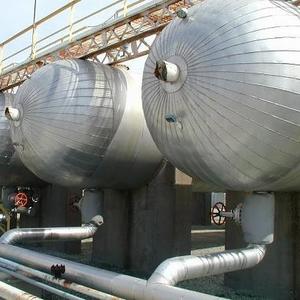Biodiesel back online at Buckeye Hartford after meter repairs

Photo: Gulf Hydrocarbon Inc.
August 2, 2013
BY Ron Kotrba
After going down for repairs late last week, the meter at Buckeye Terminal’s Hartford, Ill., biodiesel terminal has been repaired and proven accurate, and it is back in service allowing biodiesel deliveries to restart Aug. 1, said Jess Hewitt, president of Gulf Hydrocarbon, the terminal’s biodiesel supplier.
“We applaud the Buckeye Pipeline terminal employees for obtaining the part so quickly and managing the repairs and proving of the meter,” Hewitt said. “Buckeye predicted the meter would be back in service by close of business on July 31 and they delivered us a proven meter fully functioning for high-speed deliveries.”
Gulf Hydrocarbon has informed its customers and suppliers that the terminal is back online to splash blend biodiesel 24/7 for Illinois and Missouri markets. Hewitt said the downtime could cost Gulf Hydrocarbon the loss of up to nearly 30,000 gallons of biodiesel sales a day.
Advertisement
Advertisement
Advertisement
Advertisement
Related Stories
Neste and DHL Express have strengthened their collaboration with the supply of 7,400 tons (9.5 million liters) of neat, i.e. unblended, Neste MY Sustainable Aviation Fuel to DHL Express at Singapore Changi Airport starting July 2025.
CoBank’s latest quarterly research report, released July 10, highlights current uncertainty around the implementation of three biofuel policies, RFS RVOs, small refinery exemptions (SREs) and the 45Z clean fuels production tax credit.
The U.S. Energy Information Administration maintained its forecast for 2025 and 2026 biodiesel, renewable diesel and sustainable aviation fuel (SAF) production in its latest Short-Term Energy Outlook, released July 8.
XCF Global Inc. on July 10 shared its strategic plan to invest close to $1 billion in developing a network of SAF production facilities, expanding its U.S. footprint, and advancing its international growth strategy.
U.S. fuel ethanol capacity fell slightly in April, while biodiesel and renewable diesel capacity held steady, according to data released by the U.S. EIA on June 30. Feedstock consumption was down when compared to the previous month.
Upcoming Events










